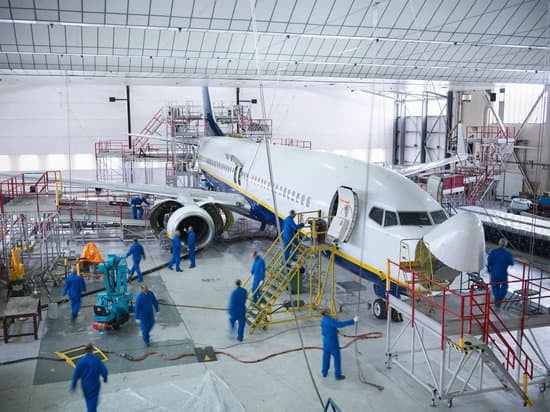Summer Air Travel Disruptions: Supply Chain Woes Could Lead to Industry Turbulence

Air travel soared past pre-pandemic levels over Memorial Day Weekend but “very frustrating” supply chain woes this summer could lead to industry turbulence.
Willie Walsh, director general of the International Air Transport Association (IATA), told CNBC that one of the biggest challenges facing the aviation sector today is supply chain issues for getting spare parts for aircraft, particularly parts for engines.
“That means that aircraft that are in service are taking longer to go through their repair cycles and it’s delaying the delivery of the aircraft from the manufacturers Boeing and Airbus,” said Walsh. “That is impacting the pace at which supply is being returned to the industry. Frustrating, because it is going to have an impact in the summer of 2023. We are already seeing that.”
TSA Screened Nearly 9.8 Million Travelers Memorial Day Weekend
The aviation industry supply chain concerns come on the heels of a busy four-day Memorial Weekend holiday where the Transportation Security Administration (TSA) announced that air travel topped pre-pandemic levels.
“The TSA said its agents screened nearly 9.8 million individuals at airports across the country over the holiday period — about 300,000 more than the 2019 Memorial Day weekend, before the COVID-19 pandemic hit,” CNBC reported. “Friday reached 2.74 million people screened at airports, which the TSA says is the most it’s recorded in a day since the pandemic.”
TSA was not surprised by the surge in air travel as it predicted in May that air travel would be up this summer.
“The Transportation Security Administration (TSA) is prepared to screen high volumes of passengers at airport security checkpoints nationwide this summer travel season, which begins Memorial Day weekend and runs through Labor Day,” said the TSA, which estimated that 2.6 million passengers would fly on Friday, May 26 – a figured which was exceeded by 140,000 travelers.
AAA has also predicted a busy summer air travel season.
“More Americans are planning trips and booking them earlier, despite inflation. This summer travel season could be one for the record books, especially at airports,” said Paula Twidale, Senior Vice President of AAA Travel.
Aviation Industry: From One Crisis to Another but MRO Future is Bright
Aviation Pros reported in May that the current supply chain issues are just the latest rough patch to hit the aviation industry as it tries to bounce back from the pandemic.
“Since the industry is in the middle of a rebound, it's been moved from one crisis to another. It was first a global pandemic and is now a global supply chain crisis. OEMs are scrambling for raw materials and components, while the workforce is reduced,” said Aviation Pros.
The publication blamed parts shortages primarily driven by the need for more resources for raw materials, and some inventory becoming scarce with the following key factors:
- There was a significant reduction in parts purchasing in 2020 and 2021.
- Airlines looked at internal resources first, swapping out and cannibalizing aircraft parts and green-time engines to avoid maintenance and the cost of purchasing replacement parts.
- As airlines and MROs paused spending, the aftermarket supply chain was starved of sales needed to sustain operations.
- Both the OEM and aftermarket sides need time to repower operations after the slowdown.
There is good news on the MRO side as AIN Online reported that “Despite acute manpower shortages and supply chain constraints, the maintenance, repair, and overhaul (MRO) segment is looking ahead to a brisk decade to compensate for shortfalls caused by Covid-19, according to leading forecasters.”
Oliver Wyman’s 10-year forecast, issued in February 2023, says the aviation global aftermarket grew by 18 percent in 2022 and should grow another 22 percent this year, to surpass $94 billion – just 2 percent below its 2019 apex. Projections put the MRO market at $125 billion by 2033.
Air Industry Resource Shortages Hit Air Traffic Control
While the focus is usually on the airlines and airline manufacturers, Walsh also told CNBC that another challenge facing the aviation sector today is shortages in resources for air traffic control.
“We’ve already seen restrictions on capacity in the United States and we’re seeing problems in Europe,” Walsh said. “Airlines and airports were criticized last year for not having resources in place in time for the recovery. I think the airlines have done their bit. Most of the airports, I think, are in good shape.”
Air traffic control shortages apply mostly to staffing issues with U.S. Transportation Secretary Pete Buttigieg warning that air traffic controller shortage could stretch well beyond this summer as the Federal Aviation Administration works to rebuild its ranks after the pandemic.
“This is going to be a journey, especially when you factor in attrition, to get to levels we want to see,” Buttigieg said during a summer travel briefing in Washington, D.C. “I think it’ll be a while before we’re at levels we’d like to see.”
Airline Weekly reports that the FAA is about 3,000 air traffic controllers short of target levels this summer which breaks down to:
- Air traffic controller staffing levels will be at approximately 81 percent nationally this summer.
- Air traffic controller staffing levels in the busy New York market will be at just 54 percent.
- The agency plans to hire 1,500 new controllers in 2023.
- The agency plans to hire another 1,800 controllers in 2024.
- New air traffic controllers require up to three years of training.
“The shortage prompted the unprecedented move by the FAA to waive usage requirements at New York’s JFK, LaGuardia, and Newark airports for 10 percent of the slots or runway timings this summer in an effort to reduce delays. The waiver is effective from May 15 through September 15,” reported Airline Weekly. “Airlines are scheduled to fly nearly 3 percent fewer flights but 0.3 percent more seats on U.S. domestic flights from New York this July compared to last year, according to Cirium Diio data.”



